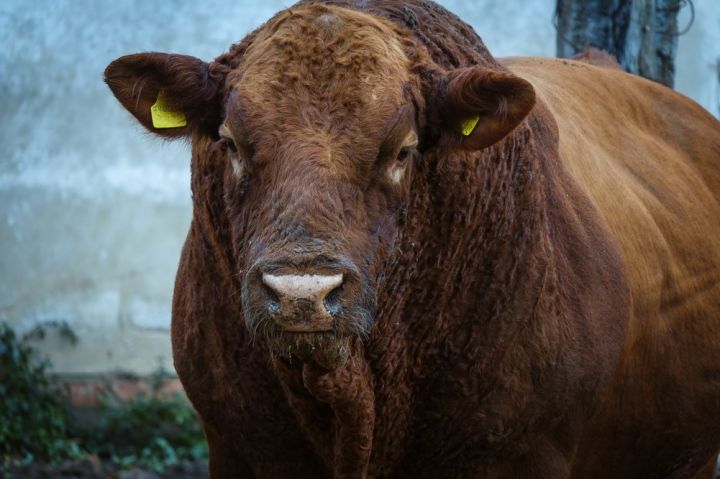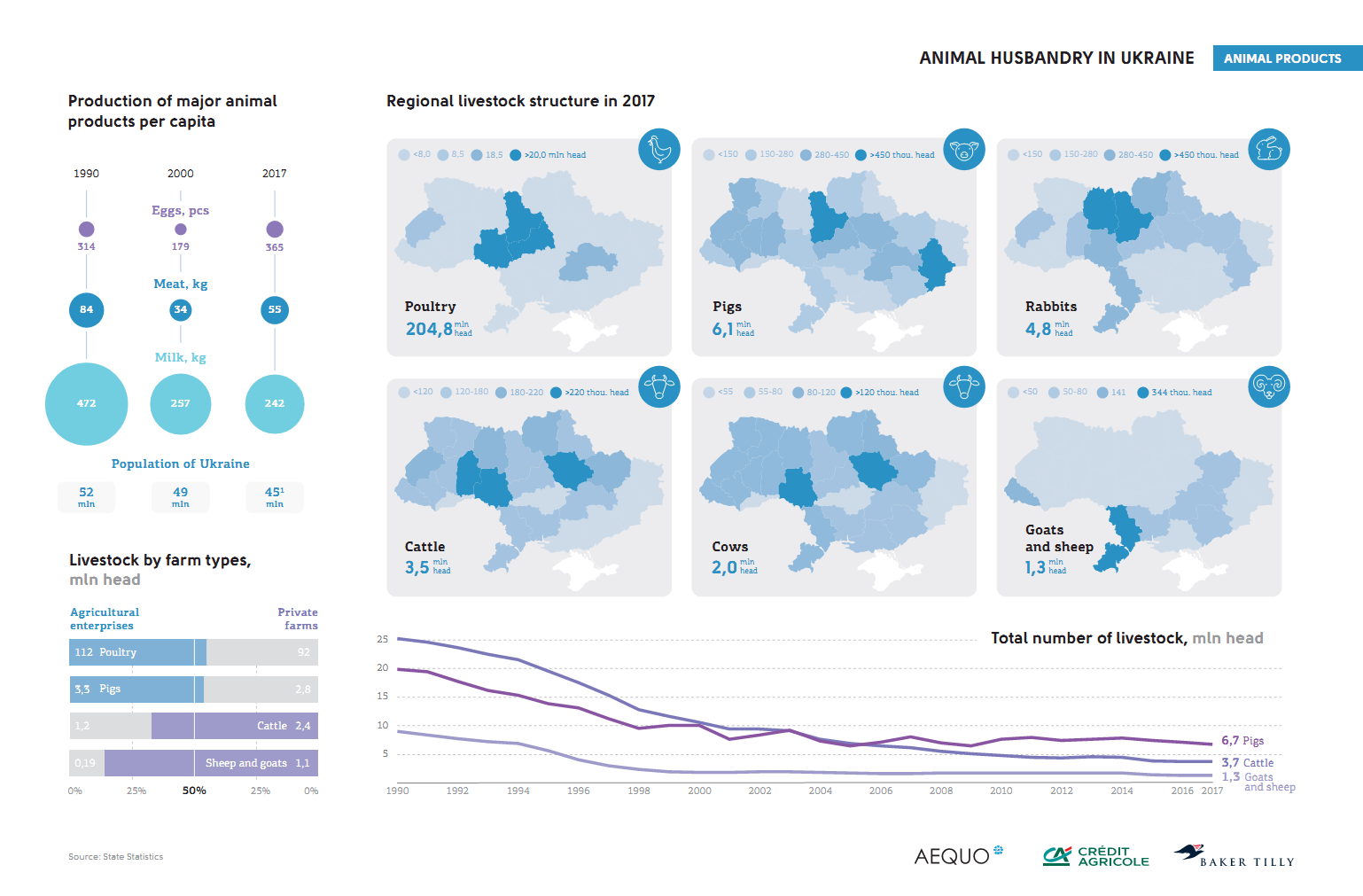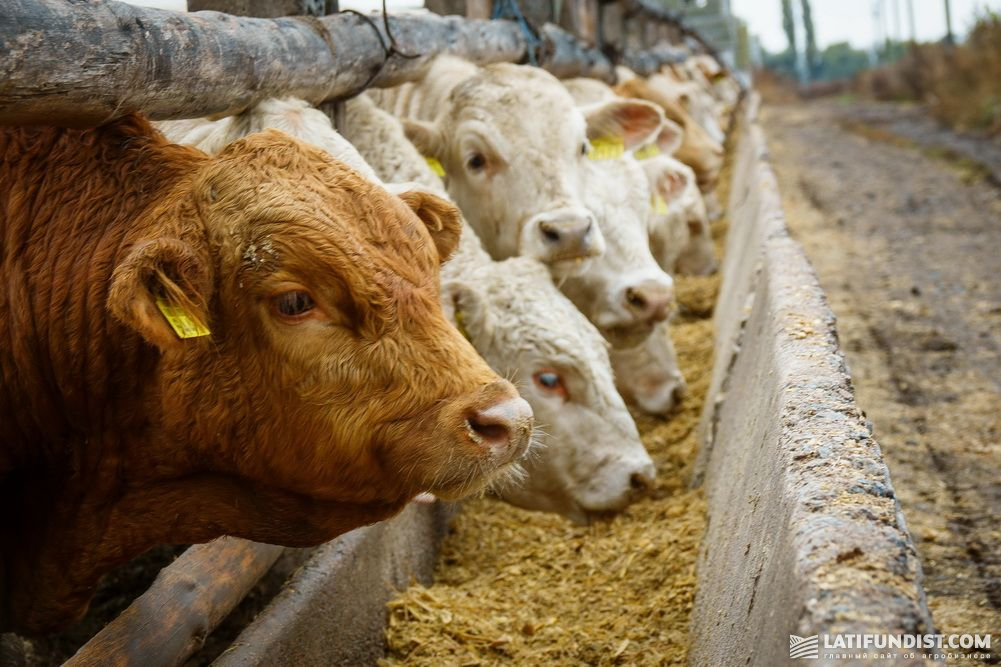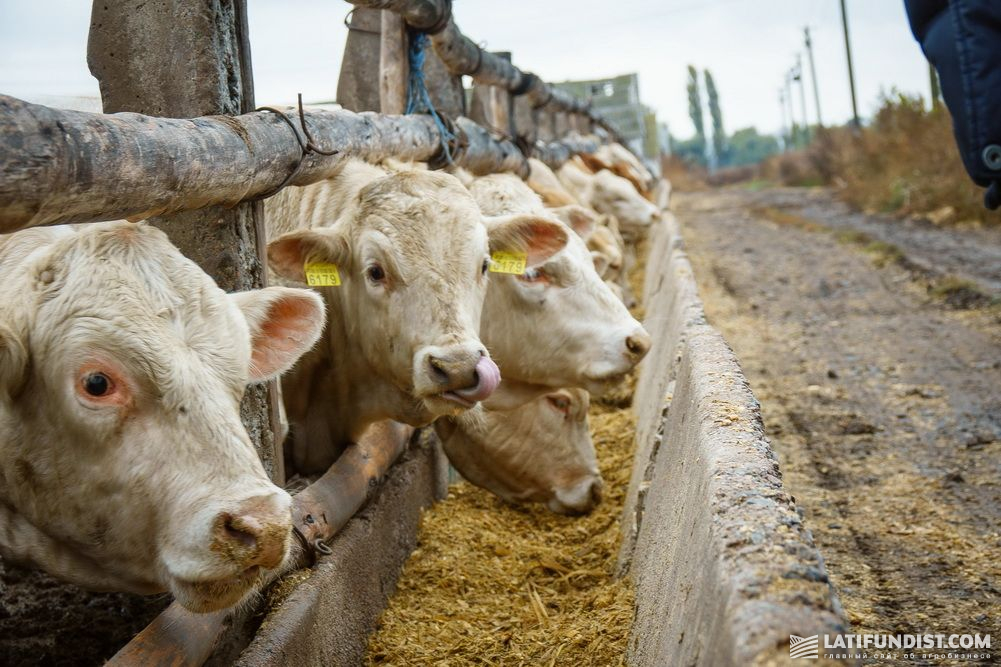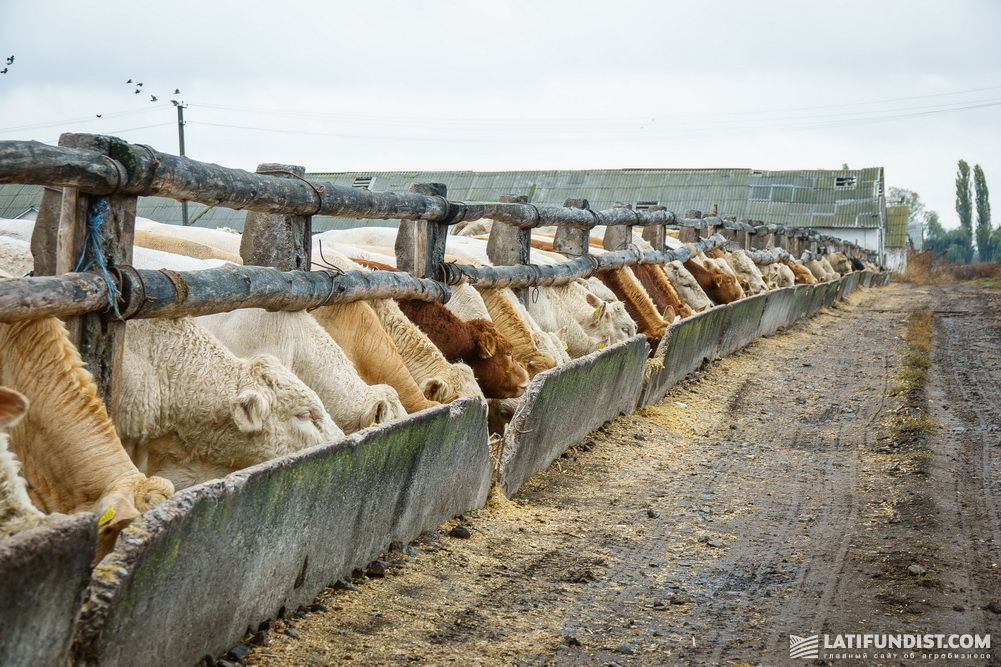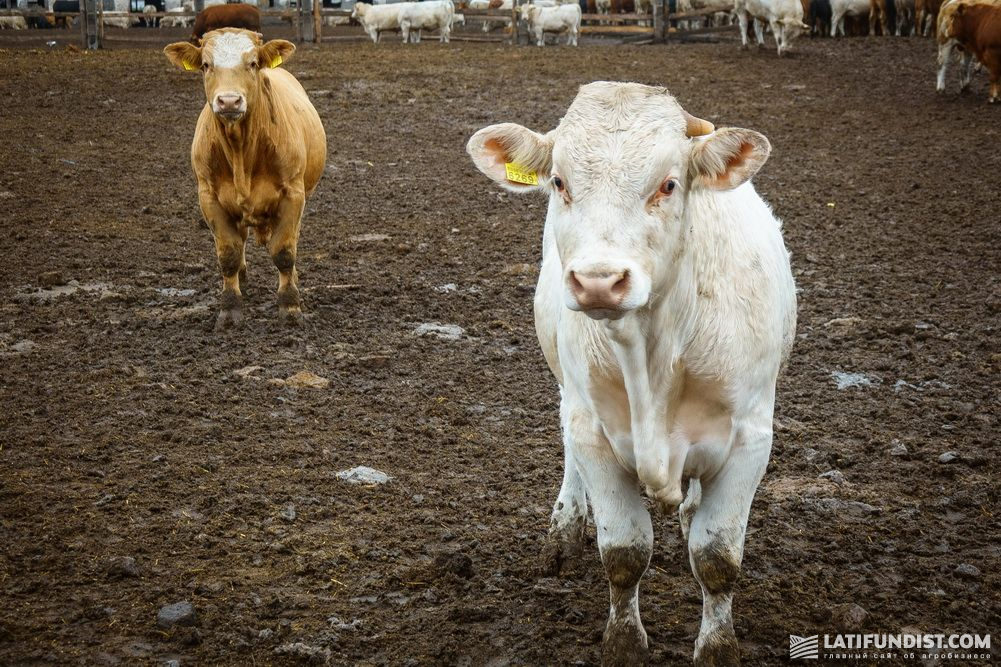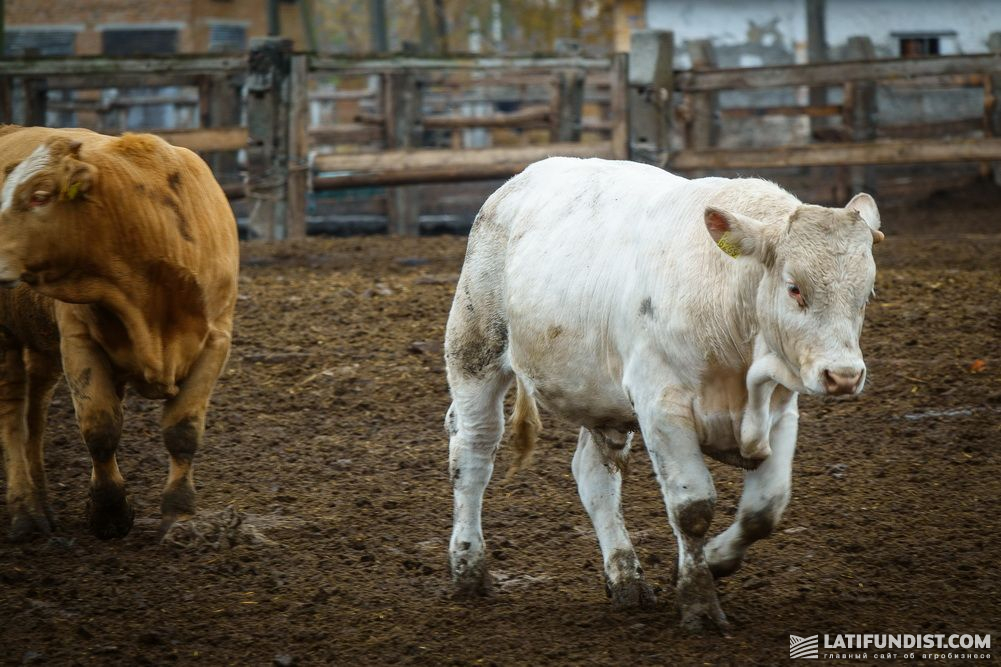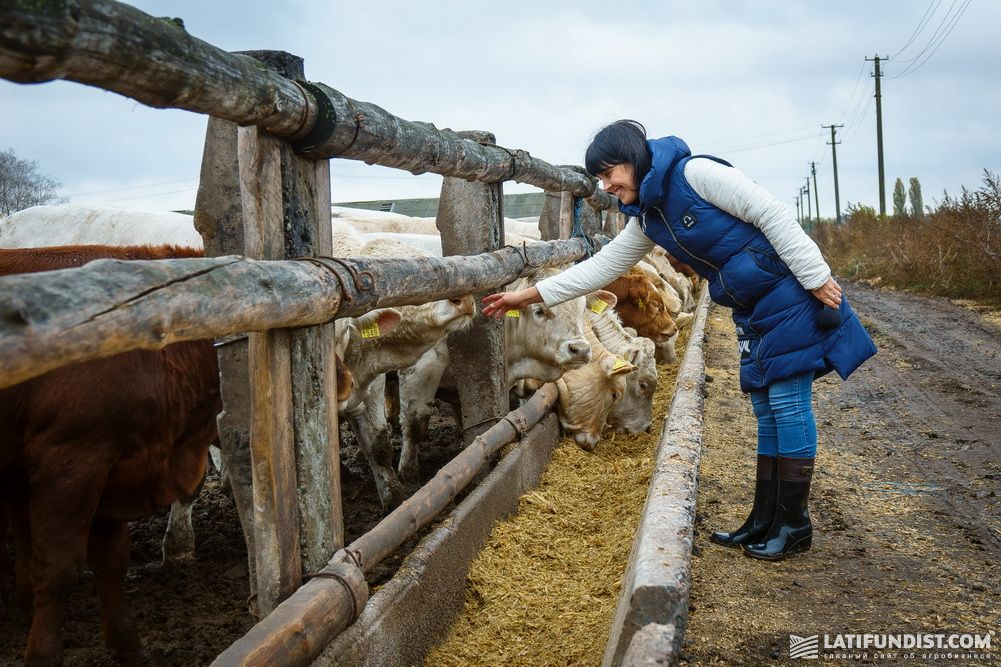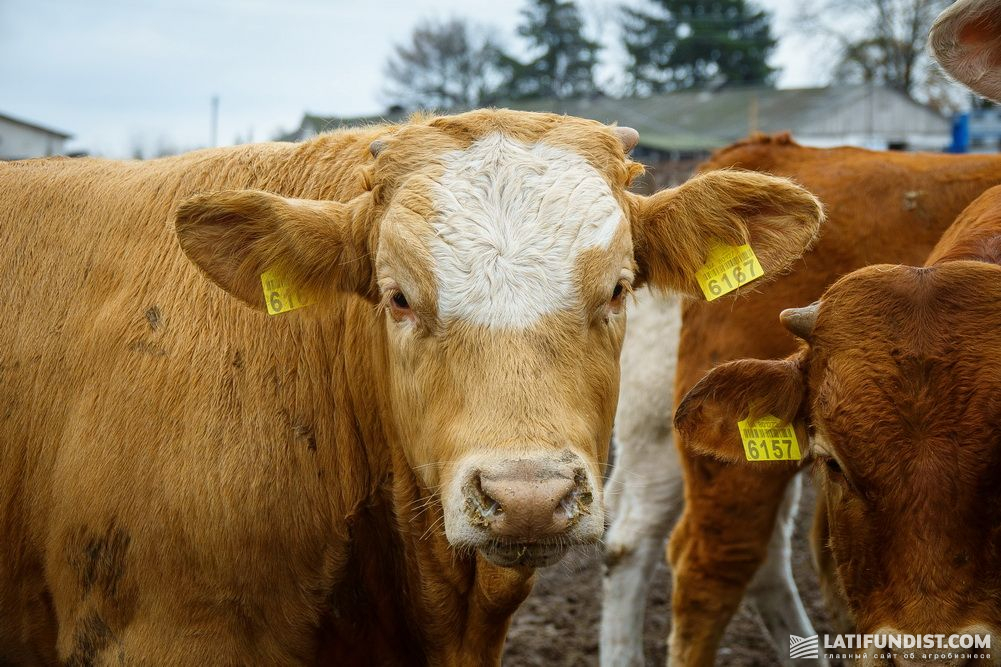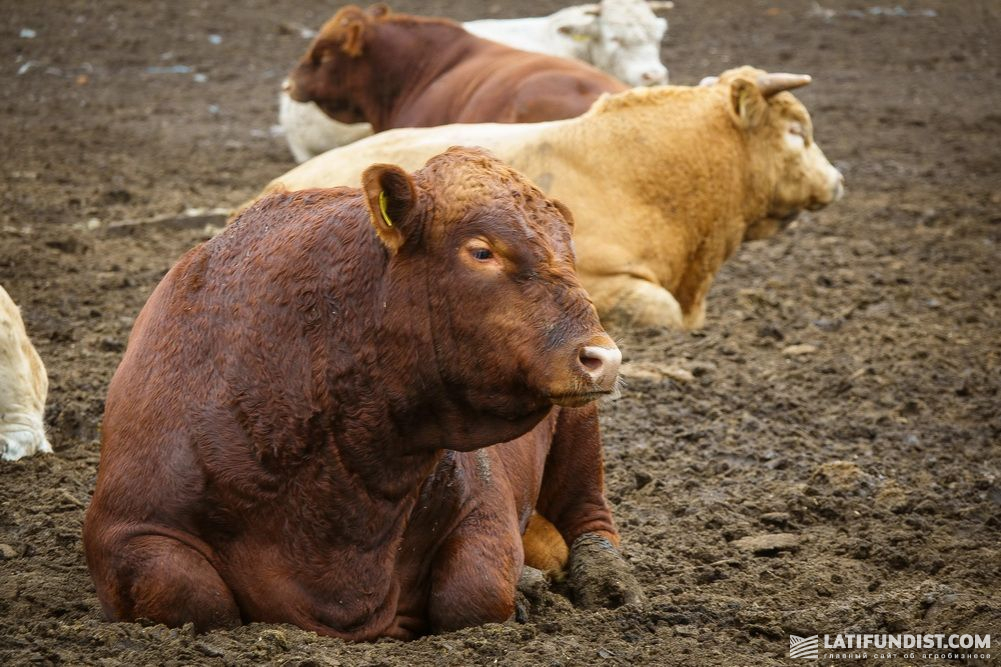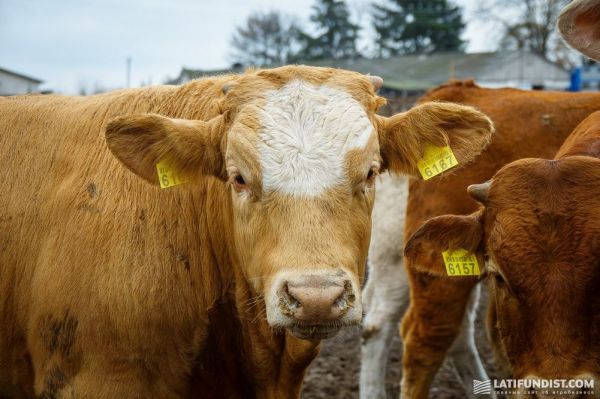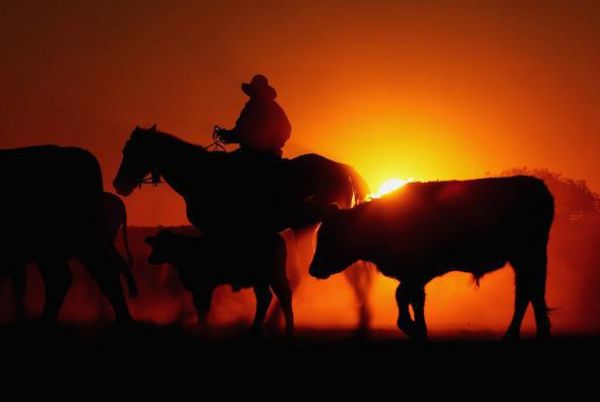Agricore Meat Stockbreeding: Breed. Export. Repeat
This time, the Chernihiv region welcomed the Latifundist.com team with overcast weather and light drizzle. Regardless of the weather conditions, we had a clear objective — to see for ourselves how meat stockbreeding is presented at Agricore Holding (a structural division of the Agrain agro group). We travelled to the Borzniansky and Nosovsky districts and saw the farm in all its glory.
We not only went to the mother-stock farms, where calves are born and spend their first six months. We learned with eyes closed to distinguish the Charolais cattle from Limousin, found out why one cannot get fresh milk from a cow and how a bull builds a muscle mass in a day. And, most importantly, we witnessed an export deal being made and saw off a batch of beef cattle on a large ship.
On the verge of survival
Yuri Gudz, the Head of the Livestock Branch of the Agrain group, noted that some 5 years ago there were more than 100 thou. head of beef cattle in Ukraine. By the official statistics, today there are about 47 thou. Head of cattle left in the country. However, the actual number is much lower. There are regions where this direction is not presented at all, for example, Mykolaiv. In some regions, the number of livestock is less than one thou. head.
"In fact, the industry is rather narrow. Its description will take one sheet of paper only. Large producers can be counted on the fingers. The main player is Agricore Holding with a livestock number of about 6 thou. head. Then comes Buffalo of MHP with about 5-6 thou. head. UkrLandFarming has about 5 thou. head, and Ratnovsky Agrarian — more than 2 thou. head," the expert stressed.
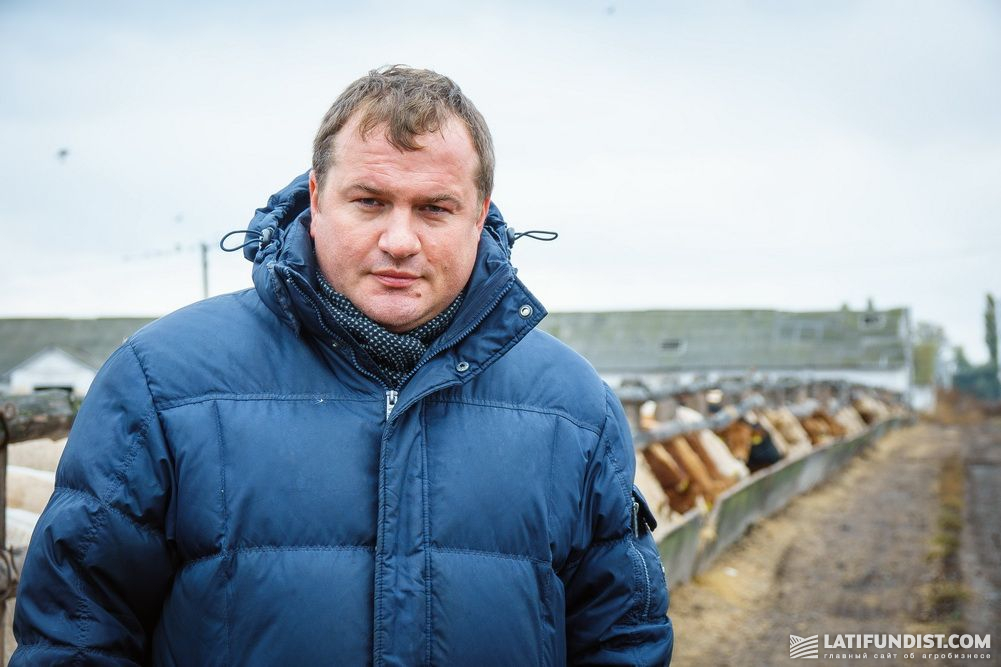
According to the State Statistics Service of Ukraine, the total number of cattle in Ukraine as of September 1, 2018, stood at 3.97 million. This is 4.3% less than at the corresponding date in 2017. Judging by industry's dynamics, the number of beef cattle over the last 10 years has been decreasing annually. In the year 2008, it amounted to 120 thou., in 2016 — 58 thou., and in 2017 — 55 thou. head.
Part of the specialized animal husbandry of the total cattle population is 1.5%. To understand the gravity of the current situation in Ukraine, one can see the examples of other states. The countries of South and North America have 75% of beef cattle from the total livestock, the European countries — about 25%.
Judging from the above figures, it can be sadly stated that specialized meat cattle breeding in our country simply perishes.
Working out the technology
Let us move from the depressing statistics to the tour. Our first location is feedlot, in other words, the fattening zone. This is where the result of the enterprise's work visible. On 7 hectares of land, there are 2 thou. head, which, upon reaching the required weight, will be exported. Cattle age varies from 14 to 16 months. Product weight contrasts with a breed. Charolais and Limousin weight 700-750 kg, whereas Aberdeen and Polissya breeds — about 500-600 kg.
Watching these beautiful creatures, it is hard to believe that some enterprises move towards the reducing of livestock rather than increasing it. The reason lies, firstly, in the low profitability of the industry and specifics of the production cycle. It takes 2.5-3 years to get the end product. Very few people wait for "long money". Secondly, the stable-unstable situation in the country does not stimulate the development of beef cattle breeding and the increase in livestock number.
“Some three years ago we were choosing between the reduction of this direction and shutting it down. We thoroughly analyzed the situation and eventually started working on cost and price. The cost price is, first of all, the optimization of the technology of animal husbandry. Price is a search for new markets. This, as a result, allowed the company to bring this business to a plus. And we can already say with confidence that our direction has been profitable for three years in a row,” Yuri Gudz emphasized.
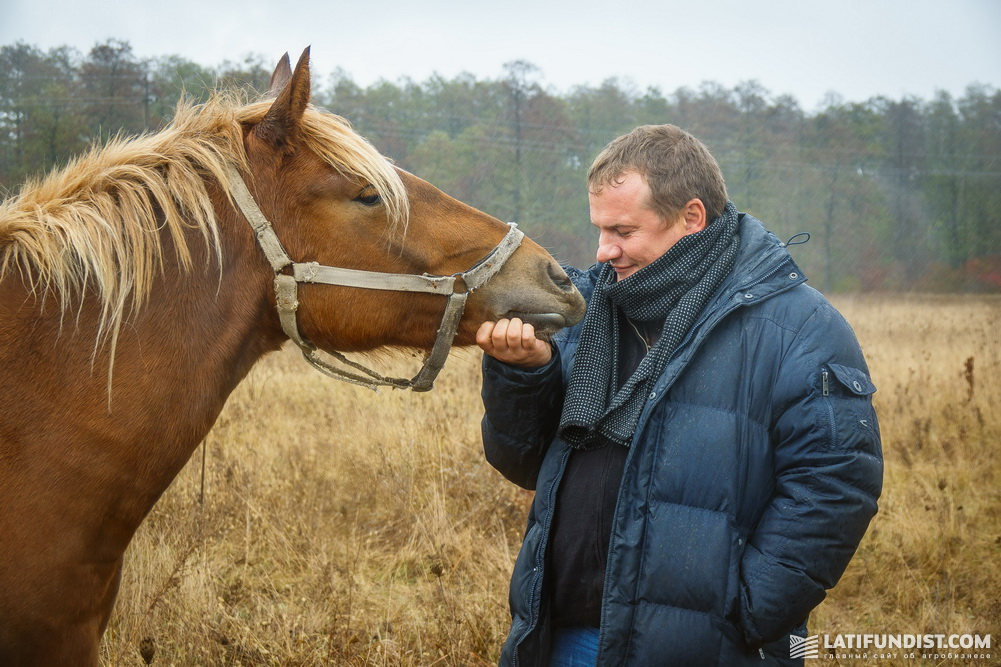
Learn more: Even with Cattle, One Can Be in the Black: Who Holds 15% of the Meat Stock in Ukraine
Today Agricore Holding specializes in several breeds of meat cattle. Charolais and Polissya meat breed make up about a half of the total livestock. The rest are Aberdeen-Angus, Limousin, and Simmental. The breeding technology includes two subprocesses — calves breeding and fattening.
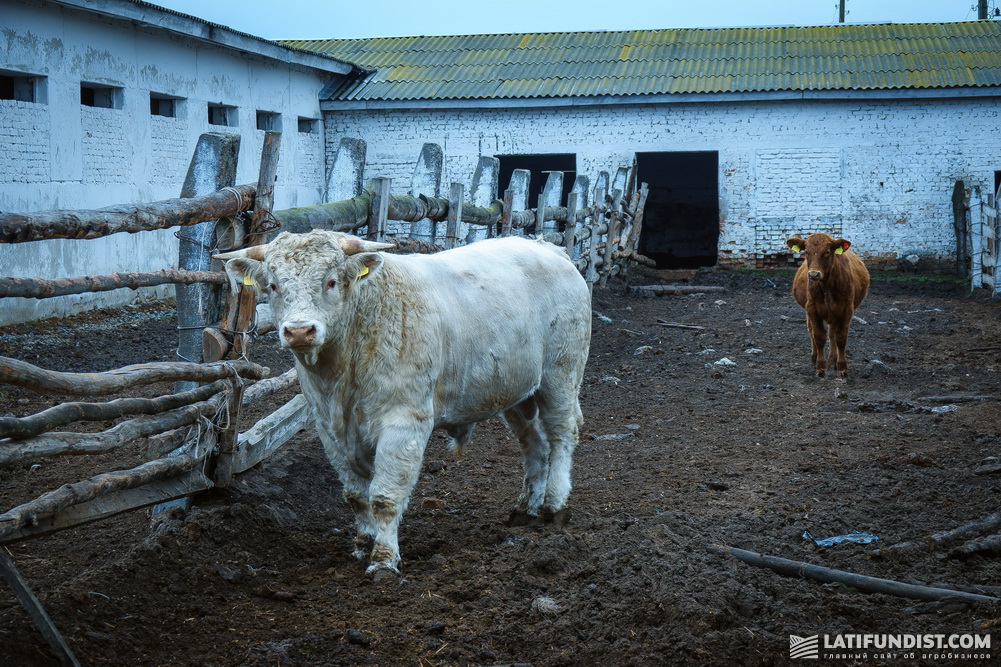
Calves are born and kept at a cow's foot. From April to December animals are on the pastures. At the age of 4-7 months, calves are taken from the cows and delivered to the feedlot. There loose housing in the open air is practised with deep irremovable bedding or the so-called barrows. On the one hand, it requires minimal capital investment. On the other hand, animals are comfortable in such conditions. Responding to our observation that it was rather chilly, the company's specialists explained that the optimum temperature for cattle is within -15 °C and +15 °C.
Read on topic: The Main Principle of Beef Cattle Breeding is Animal's Freedom
Anyway, the Latifundist.com team is still far from bull's frost tolerance. Noticing that we are pretty cold, Yuri Gudz proposes to continue our tour. The next two stops are mother-stock farms and grazing land. They are located at a distance of about 90 km from our first location. So there is enough time to warm up in the car and chat. On the way, we are talking about the American technology of grazing, which they decided to introduce at Agricore farm. According to Alexandr Budnyk, the chief livestock production technologist at Agricore Holding, the issue of economy and profitability plays an essential role here.
“Speaking of the range-fed technology of breeding a specialized meat breed calf, the cost of one day with feeding goes within UAH 4-5 provided there is grass and mother's milk. Here he grazes for about 6 months and as a result, weighs an average of 240 kg. In case a calf is fed, it may have a higher weight gain. But here the question of economics comes to the fore. Milk or a substitute of whole milk must be provided. A calf needs to be given a granule or feed instead. And I'm not talking about the salary of the worker who will water this calf and take care of it,” Alexandr Budnyk explained the mathematics of beef cattle breeding.
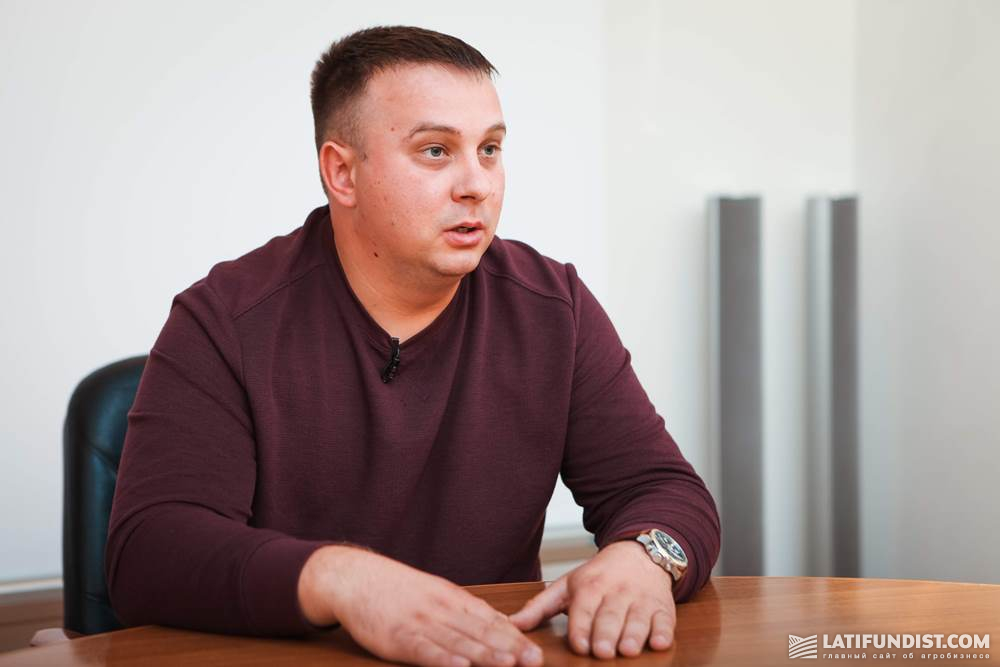
Read on topic: Livestock Production in the Land of Oz: An Australian Trace in the Domestic Industry
To each his own
Here we are on the spot. There are four such farms with breeding stock in the company. Each of them houses about 1 thou. head. Well, the landscape is no longer bursting with rich green colours, but against the background of faded grass and shrubs, about 200 cows with calves of the Polissya meat breed stand out with bright spots. Most of the calves (about 90%) are born on farms from December to March. The rest of the time, calving takes place in its natural habitat. Here the young stock spends about six months.
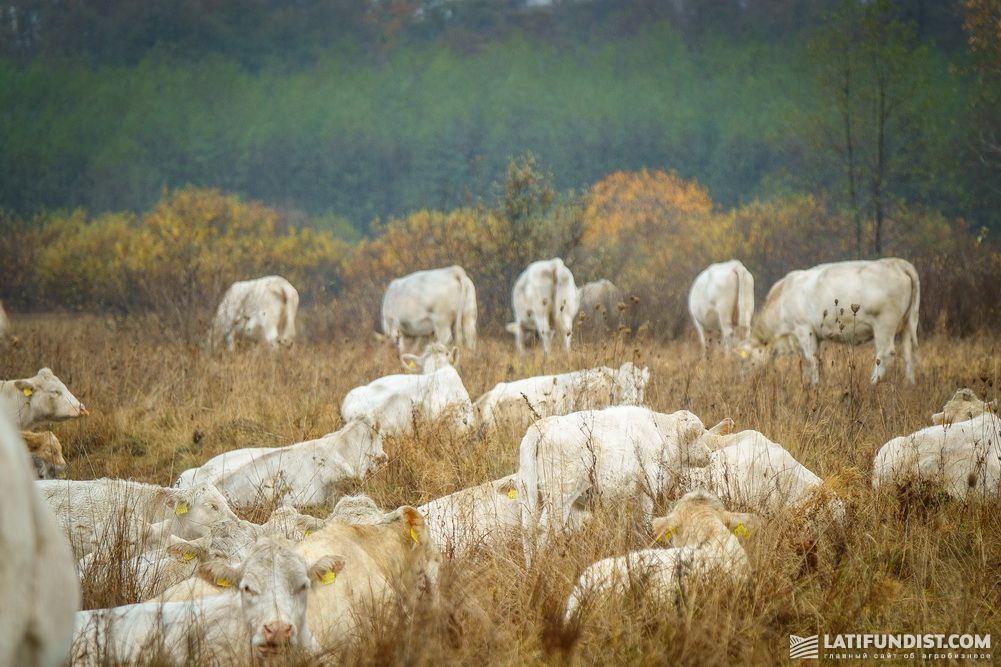
In the summertime, animals in Agricore feed only on grass. At the farm we are visiting, for example, cows have at their disposal five hectares of land, which are roughly divided into squares. Every 2-3 days they are moved to a new site. After the cows have left the farm, they can wander for 30-40 km from it.
“Agricore cultivates 42 thou. hectares of leased land in the Chernihiv region. Of these, about 5 thou. hectares are natural pastures and hayfields. The peculiarity of the region is that there are numerous wetlands and it is provided with sufficient moisture. And, accordingly, there are a lot of natural grasslands and pastures. It turns out that we have a zero cost of food. If the animal were only on the farm, then the cost of one feed day of one beef cow would be in the range of UAH 20-25. So we only have to pay the shepherd’s salary,” adds Yuri Gudz.
Cows graze on flood meadows covered with water until April. As soon as it absorbs, the cattle are out. When there is not much feed left on the pasture, hay and straw are brought here. With the transition to the stall period on the farm, the ration of animals consists of silage, haylage and straw. The grazing territory is fenced with the electric shepherd. Cows share the location with horses which serve as means of transport. Shepherds help to drive the herd to another field when all grass on pasture is consumed.
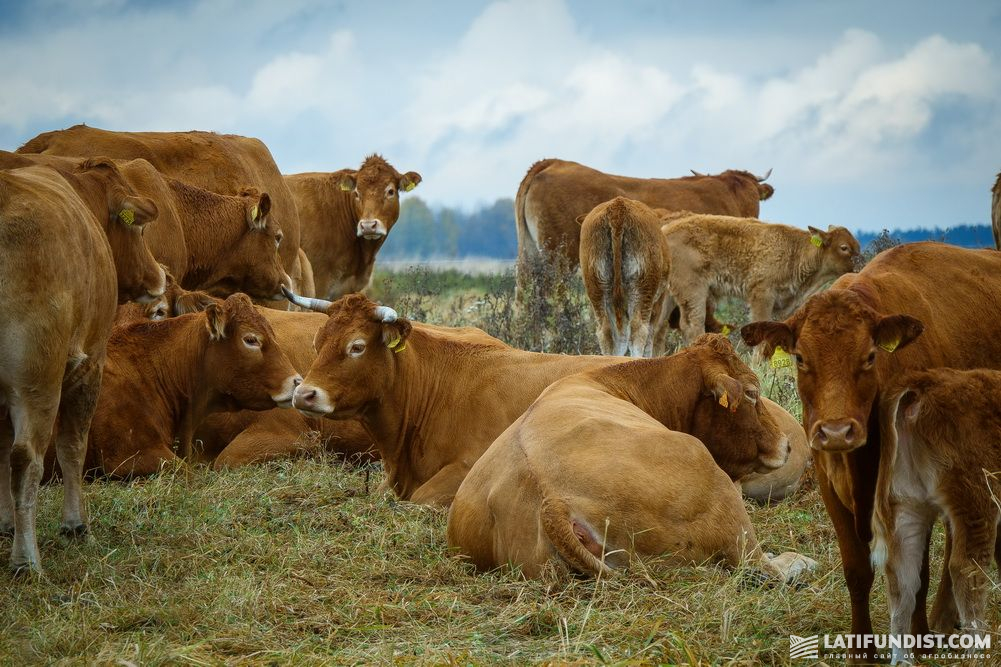
“If there were no horses, I would not catch up with the cows,” one of the shepherds jokes. Usually, there are two of them on the 48-hour shift. On our assumption that they have a perfect opportunity to drink fresh milk, they answer laughing: “You could try to milk”. In fact, free-grazing cows are not like those in small farms. It is simply impossible to approach and caress them. One can only observe from a distance.
The Chernihiv safari
You won't believe it, but the scenery is much like a safari, only it is Chernihiv-style. And instead of noble lions, there are no less elegant Limousins. Here there are slightly more than 100 head. Some of them graze, others watch visitors cautiously. The third and youngest group take no other interest other than in their lunch. We notice that the grass here is greener than in the previous pasture, and it looks quite different. The thing is that it is a different kind of grass growing on the field. But the principle of grazing is the same as in the previous location. To drive around and see all 12 herds of different breeds, unfortunately, would not be possible. The distance between them can be up to 100 km. So our tour was limited to the acquaintance with the two breeds only.

But we were not only interested in grazing conditions. It was also interesting to know how susceptible the cows are to diseases in such free housing conditions. According to Alexandr Budnyk, all animals are pedigree and require more thorough care. The main problem on the farm today is dyspepsia.
“I would not say that this is some kind of a massive fatal disease, but the meat industry is exposed to it. This results primarily from the unclean udder. The cow simply lies down and contaminates it. The calf will feed on the milk and on the pathogenic bacteria at the same time,” the specialist explains.
Vaccination in Agricore is considered a good remedy, if not a panacea for all diseases.
We talked about the nutrition and healthy lifestyle of the cows on our way back to the farm. It is quite a distance and we still have a few questions to ask.
Thousand and one head
Our team saw the basics of the beef stock farming business process. Only the final question is left — what happens to the fattened cattle then? Breeding an animal for sale is merely a step one. The next step is to market it and this is where the search for a buyer comes in. As a result of underdeveloped beef consumer culture in Ukraine and low purchasing capacity, Agricore sends about 95% of its livestock for export.
The year 2016 was a turning point for Agrain when the agro group began not only exporting its products but did it without the help of intermediaries. That year, the first ship with 1 thou. head of cattle headed for Lebanon. Today Lebanon is a priority. As Yuri Gudz noted, 95% of the total export products were delivered there. Small batches are shipped to Georgia and Azerbaijan. The work on opening new markets for the company's products continues. It is planned to make deliveries to Jordan, Egypt, and Libya. According to specialists, the export market is limitless, and Ukraine should take part in meeting its demands.
“As the owner of the company said four years ago, we sold Mercedes at the price of Zaporozhets. And here we see quite the opposite thing. Some want to sell a domestic car at the price of a foreign one. Although a few years ago, when we formed the first batch for export, about 30% of it did not fit the buyer in terms of fatness, breed composition and other qualities. Today, 99% of our livestock meets the most stringent requirements. Only animals with mechanical damage are rejected,” comments Yuri Gudz on the achievements.
The transaction course
Today, according to Yuri Gudz, they are focused on cooperation with a buyer from Lebanon. Taking any comments from the buyer turned out to be an impossible task. The terse Lebanese just made a joke and did not agree to an interview. This man came to Ukraine back in the 90s, when, together with his partner, he exported livestock. About ten years ago in our country, he himself was engaged in livestock breeding, had four farms with total livestock of ten thou. bulls. In 2014, due to the tense situation in the country, he returned to his homeland. Only a year ago he came back to Ukraine. The businessman contacted Agricore Holding himself. Thanks to a contract with a Lebanese partner, the company has already exported three ships loaded with an average of one thou. head each.
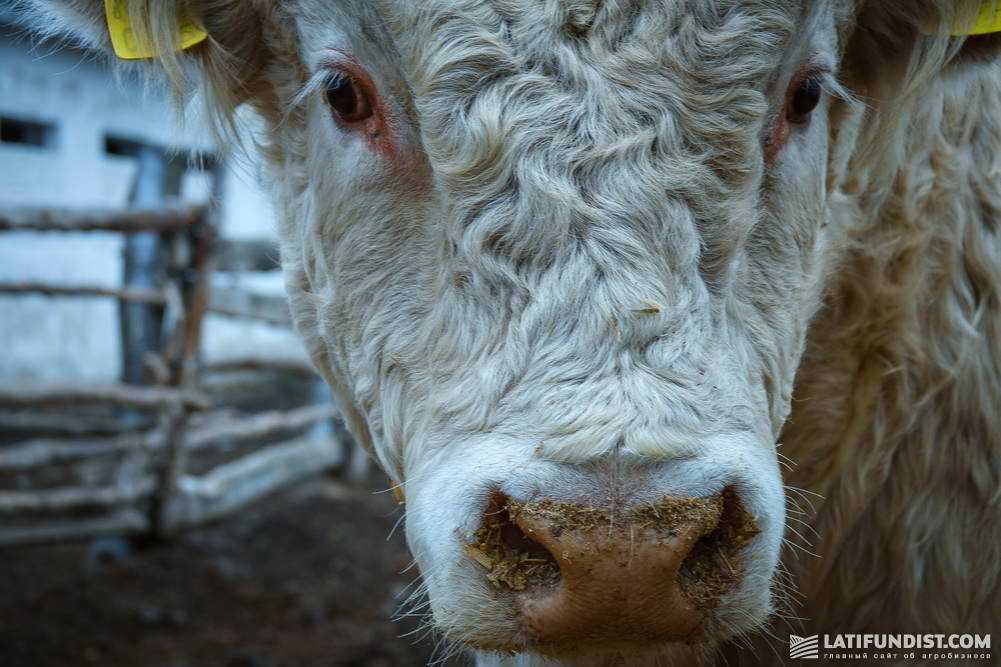
However, Agrain specialists note that it is not that easy to deal with foreigners. They can change the rules of the game on the go.
“Buyers, including Lebanese, are different. Just like all people, with different temperament and character. There are normal partners, with whom everything happens according to the clear “yes-no” scheme, and final settlements are accompanied by a nice cup of tea or coffee. Yet it happens that one day we agree on one thing, tomorrow another one comes out, and at the time of shipment, something else appears. It turns out that they need cream only. Others order only red, black, or white bulls," Yuri Gudz remarked.
This is not the case with the company’s Lebanese partner. If everything is settled, it is settled indeed. However, the partner always tries to control the process of weighing and loading animals to a cattle truck by himself. He looks, assesses each bull, keeps track of the numbers on the scales, makes some notes in his notebook. Another important point for him is the absence of injuries. Feet and hooves must intact and strong. After all, bulls and cows will have to travel a considerable distance to the port. To be exact, they will have to stay standing for about 12-14 hours and then a weeklong sailing on the ship.
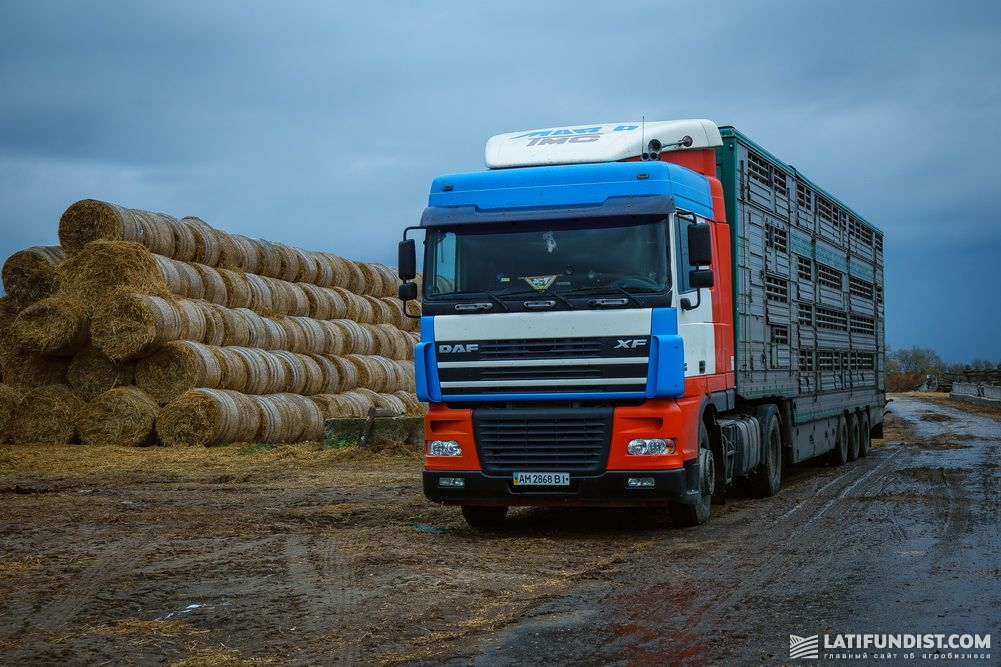
Generally speaking, the process of preparing livestock for export is quite a long procedure. Cattle is quarantined for a three-week period. Animals must undergo laboratory control and meet all veterinary requirements of the buyer’s country. If everything is fine, only then the customer orders the ship.
When all the procedures are completed, the bulls are loaded into special cattle trucks with a carrying capacity of 18-20 tons. One such truck can carry up to 30 animals weighing 600-700 kg each. By the way, there is also a demand for heifers, although it is low. Under one year of age, they are bought weighting 200-300 kg. These animals are mainly purchased for insemination and further breeding.
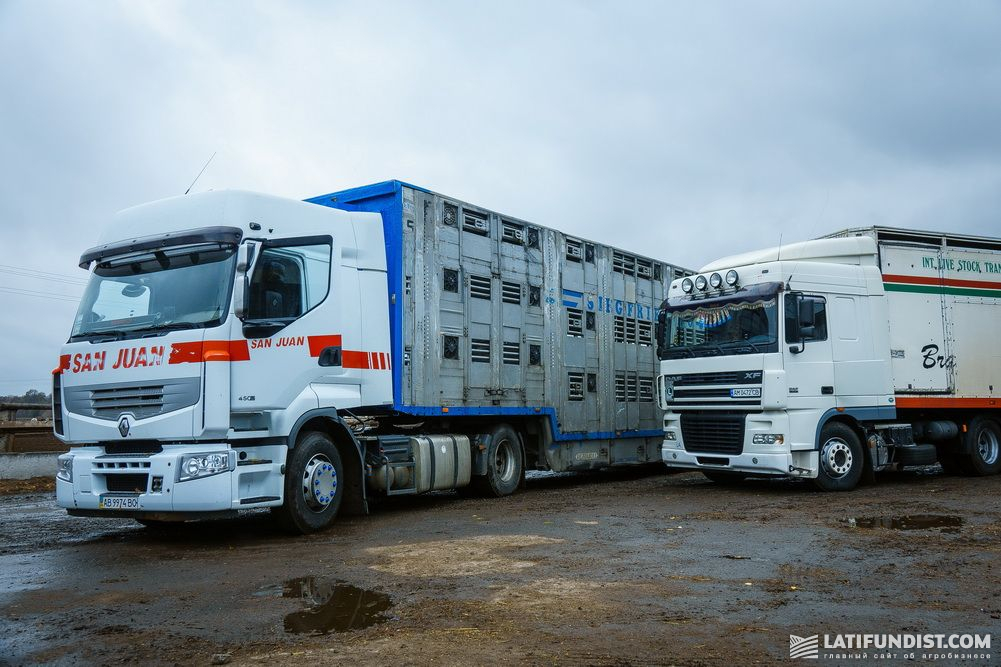
Misha the bull
The deal is closed, the animals are aboard. Now, the feedlot will be taken by new bulls that have yet to grow. Still, there is something at the farm that remains unchanged. Its name is Misha. This 6-year-old Canadian was once the father to several generations of bulls in Agricore. The father’s mission has already been accomplished (stud bulls are given three years). And now Misha is working, so to speak, in a different field. He is an exhibition model. For two years in a row, he has been demonstrating himself in all his glory at various livestock shows.
“He is very calm. Usually, the animal is prepared for the exhibition for about 2-3 months. It is placed in a special box, then washed. A tranquillizer is usually used for sedation. However, when we tried it in a small concentration on a 980-kilo Misha, he simply fell asleep. Frankly, we were shocked at first. But when the bull started snoring, it was very funny. So, no more such sedatives were tested on it,” recalls Alexander Budnyk laughing.
Today, at exhibitions, Misha is calm as ever and even allows lying on his back. We did not risk it since we know each other for a short time. Anyway, we promised to come back and “get to know” each other better.
Anna Ombodi, Latifundist.com

